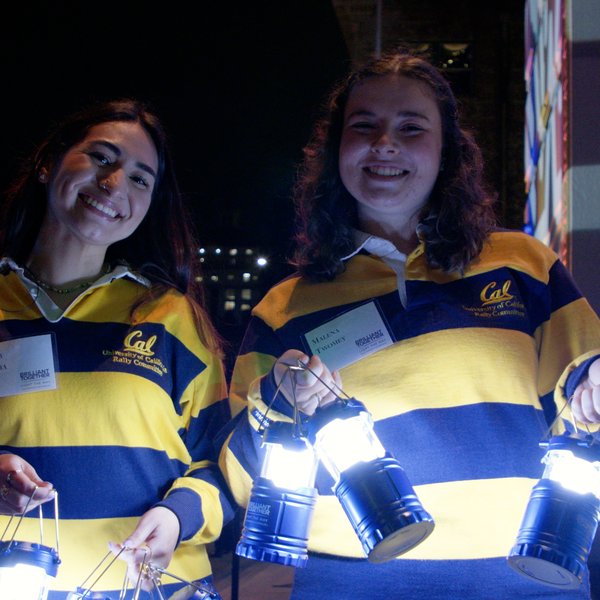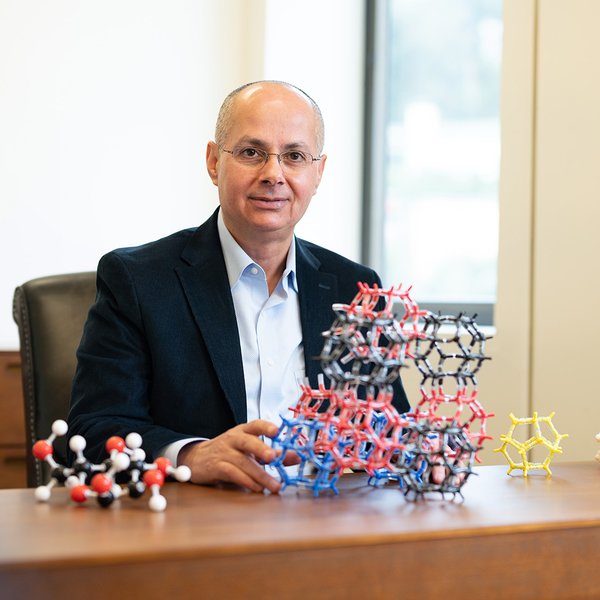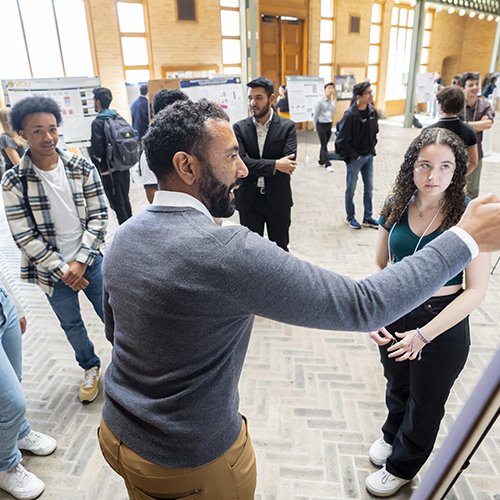In 2006, geomicrobiologist Jill Banfield was puzzled by a pattern in the genes of bacteria that had been reassembled in her lab. A repetitive sequence of genetic code bookended stretches of DNA that matched DNA from bacteria-attacking viruses. Other researchers had dubbed the peculiar genetic pattern CRISPR (“clustered regularly interspaced short palindromic repeats”), and Banfield suspected that CRISPR could be an anti-viral defense system.
A professor in earth and planetary science and environmental science, policy, and management, Banfield looked online for fellow Berkeley faculty interested in RNA interference, used by plant and animal cells in their immune response. She located biochemist Jennifer Doudna, a professor of chemistry and molecular cell biology.
Doudna’s lab studied RNA, a chemical cousin of DNA, which is the molecule that codes for life. Banfield phoned her. Doudna didn’t know Banfield and had never heard of “crisper” but was intrigued by her colleague’s intensity. As Doudna recalls in the book A Crack in Creation, “… her excitement was palpable even over the phone, so I agreed to meet her for coffee the following week.”
During their conservation at the Free Speech Movement Café, Doudna grew more curious about CRISPR’s unknown function. Her lab could design experiments to test Banfield’s hunch. “At the time,” says Doudna, “there was no experimental evidence that this was in fact an immunity pathway in bacteria, but Jill, with her incredible scientific sense, had the idea that this would be something very interesting for a biochemist like me to investigate.” Doudna followed her curiosity and started probing into the biology of CRISPR.
Ultimately, the Doudna Lab homed in on a protein called Cas9 being key to the CRISPR system. Cas9 can cut a specific sequence of DNA found with the help of an RNA guide. Doudna had begun collaborating with the lab of French microbiologist Emmanuelle Charpentier. Together, the two labs discovered in 2012 that it was possible to control where Cas9 cut DNA by changing the particular RNA guide. Cas9 could be engineered to cut DNA at any point — potentially in any cell within any kind of organism.
On October 7, 2020, Doudna and Charpentier shared the 2020 Nobel Prize in Chemistry for this revelation, which has revolutionized the molecular life sciences around using CRISPR for genome editing. At the press conference, Doudna promptly acknowledged Banfield’s integral role. Later that day at a celebration on Zoom, Banfield praised Doudna’s inspirational research and leadership that has “put UC Berkeley at the center of the genome editing universe.”
At Berkeley, curiosity often leads to collaborative research for transformational change. Doudna and Banfield have co-authored papers and co-advised graduate students. They moved their labs into the same building, home to the Innovative Genomics Institute (IGI) that Doudna launched to lead the responsible development of CRISPR technology for solving global problems in human health and sustainability. As one of IGI’s scientific directors, Banfield oversees microbial discovery for new tools like CRISPR.
Reflecting on all that’s transpired since that auspicious coffee date, Doudna says, “[I] couldn’t have done the work without being here. I don’t think it would have happened if I wasn’t at Berkeley.”





